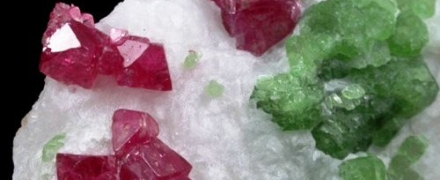open 10 am - 7 pm
laboratory is closed
Pargasite

Another black stone used for the manufacture of jewelry inserts is a mineral of the amphibole supergroup - pargasite. The name was given by Faddey Fedorovich Shteingel (Fabian Gotthard von Steinheil, 1762-1831) in honor of the place of the first find - the settlement of Pargas on the island of the same name in the Turku archipelago (now the city of Parainen, Finland). The mineral is brittle and has perfect cleavage, which makes it difficult to use it on a large scale for the manufacture of faceted inserts. Usually, stones are cut by cutters in the form of cabochons and faceted cuts. In addition to opaque black stones, transparent and translucent stones of brown and green are used. Moreover, the largest amount of cutting raw materials of green chromium-containing pargasite is mined in Myanmar (former Burma) and Vietnam, a small amount of raw materials comes from Pakistan, Nepal and Tanzania.
В геммологической практике бывают весьма увлекательные случаи с диагностикой ювелирных вставок
Но помимо редкости цвета и высокой стоимости таких камней, многие розовые камни выделяются одной замечательной особенностью – они проявляют плеохроизм, то есть в зависимости от положения осмотра камня он может иметь дополнительные оттенки – оранжевый или пурпурный.
Currently, gemstones are produced by two fundamentally different technological methods - the High Pressure - High Temperature method (“HPHT”, High-pressure & High-temperature) and the Chemical Vapor Deposition (“CVD”, Chemical vapor deposition) method. The "HPHT" method is the most tested classical synthesis method, which can be used both carbon deposition on diamond from flux melts and catalytic reactions. In "CVD" synthesis, diamond growth occurs on a seed during carbon deposition mainly from a gaseous medium at relatively low temperatures and pressures.
Jewelry and precious stones are just such a category of goods, when buying which you need to pay attention to many criteria.
Sogdianite is a rather rare mineral and more often it can be found as a collection material (moreover, in systematic collections), and it is extremely rare in jewelry.






